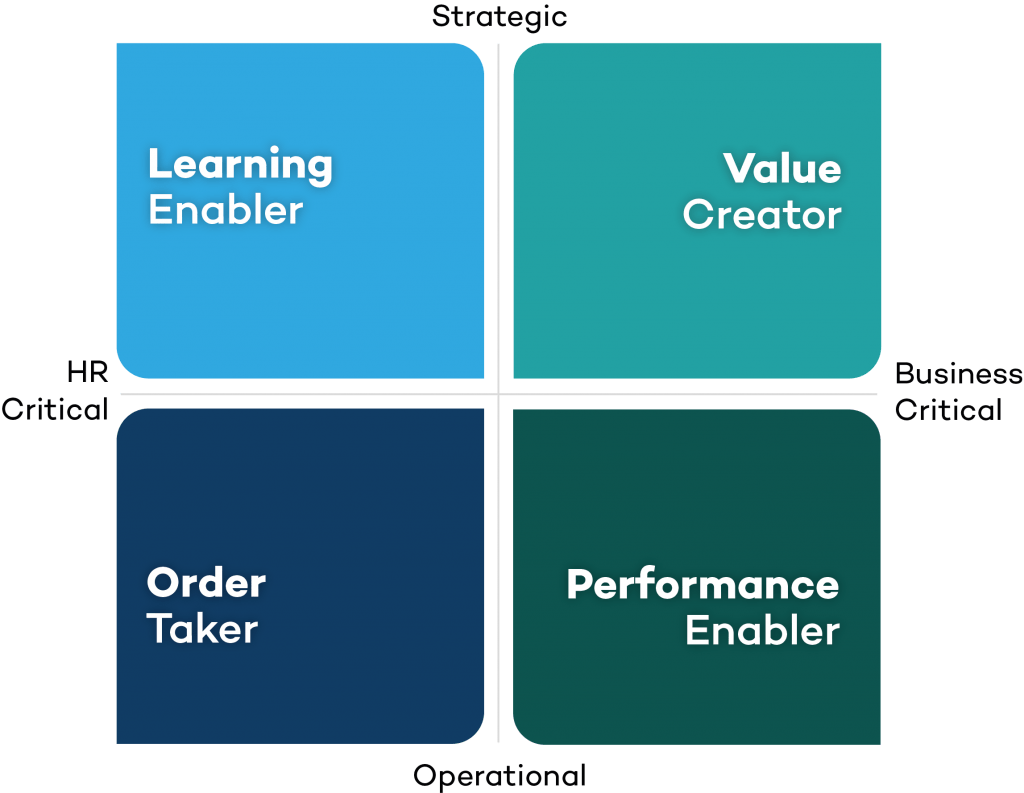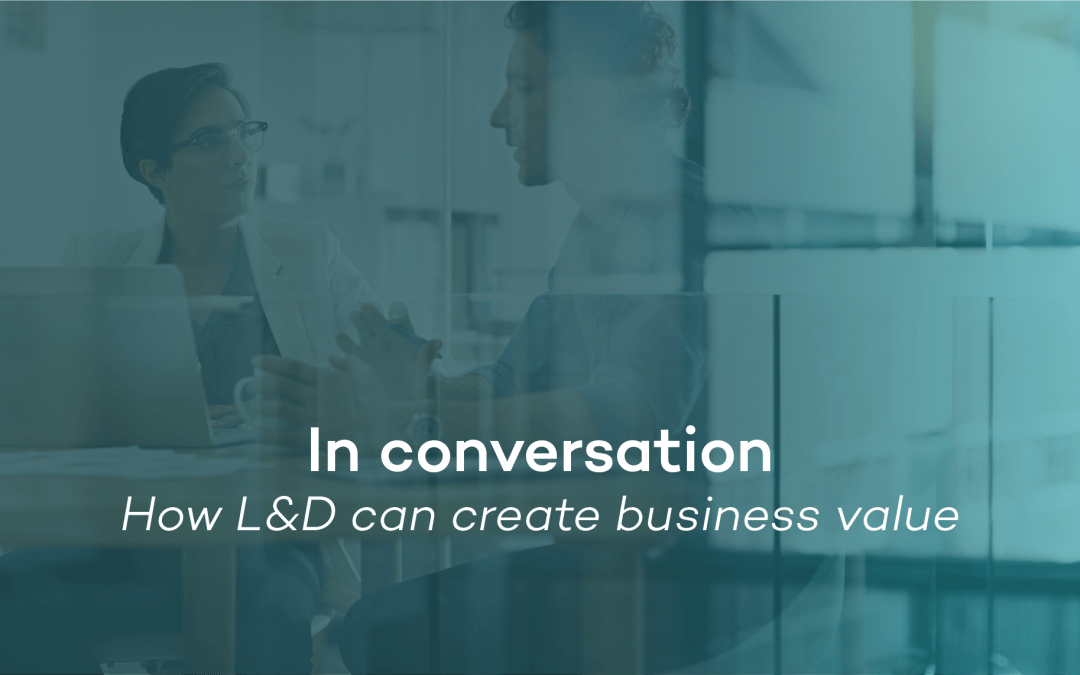By Laura Overton
Jos Arets from Tulser walks through a four quadrant model that L&D teams can use to move to applying a business paradigm to their work in order to create strategic value. Geraldine Voost provides practical insight into what it takes to make this shift from her current work as a learning leader at Bronkhorst. Together they provide practical advice for L&D professionals seeking to create higher business value.
The Emergent Series of Learning Uncut podcast explores how L&D can emerge stronger from the pandemic. In one of the earliest episodes Jos Arets and Geraldine shared their experience and practical insights about how to shift L&D business models in conversation with host, Michelle Ockers.
We’d recommend that you take a listen or scan the transcript of this rich and deep conversation. To whet your appetite, here are just some of our highlights from the episode:
Some background to the conversation
Organsations increasingly assess the different components of their primary processes based on business models, including determining measurable added value. This is a logical process and applies at organizational and department level. The L&D department is no exception. L&D is expected to show the value it creates for the organization, in the same way other department are required to demonstrate value.
The 4 L&D business models described here support the transition from learning to business value. To stay current and relevant in an ever-changing world it seems to be appropriate for L&D to undertake a deep change to move from learning to business paradigm, moving from the left to the right in the business model framework for L&D (Jos Arets).
On the 4 L&D Business Models

The 4 L&D Business Models (Jos Arets). For further information about this model, please go to Jos’ description at 08:43 in the podcast, which you can find at the bottom of this page.
On systemic change
Jos: ‘If we want to change the L&D department, first of all, they should be aware of their business model because then they know which value they are generating. If you want to change your business model, that will take a systemic change.’
On formal and informal learning and critical tasks
Jos: ‘When you are supporting individuals and also teams and developing expertise you start not with thinking about competency development, but you start thinking about what kind of results do you like to achieve, what are the work processes, and then very important, which critical tasks are necessary to achieve those results. And if you focus on this critical task, then you can start developing informal learning solutions because people don’t always have the right knowledge or the right information while working.’
Jos: ‘ We say formal learning and informal learning should be the core business of L&D. So, we should include it and not bring formal or informal learning in competition with each other.’
On the opportunity to expand L&D services and shift business models
Jos: ‘I am designing right now what I call Value based learning – That’s the holistic and inclusive way of looking at organisation learning, informal learning and formal learning. We are looking at how can we support organisational learning? How can we support informal learning, and also support formal learning? This is really an opportunity for L&D to expand the services.’
On kick starting the process of shifting your L&D Business model:
Geraldine says: ‘had a new general manager who started, I think three years ago, and he asked me a question when I had just joined, “Okay, so we have these training programs, but how do I know that they have been effective? What kind of changes will I see in the organization and in the way people work that prove me that this was worth the investment? That set the ball in motion.’
On making progress changing your business model:
Geraldine: ‘We made progress by looking at the bigger picture. We now ask what can we do to help people grow and develop? What kind of performance support can we implement? Before, somebody would come to us and say, “Okay, I have a problem in my department. I need to train my people so that the problem goes away.” Now we say, “Okay, hang on a minute. Let’s look at this from a different perspective. What are you trying to achieve? Why are you trying to achieve it? What are the processes that are in use? Do people have the resources that they need? The knowledge that they need. Are the processes efficient?’
On collaboration and co-creating value
Geraldine: ‘Plus that we involve the people from the department themselves, so you’re really co-creating with the people from the business, rather than they drop the problem in the training department and the training department creates a solution on their own and they roll it out and you find out.’
On making the case for business model change:
Jos: ‘Don’t talk about this stage, but demonstrate value in really small pilot projects that you’re doing this. Keep it under the radar and then from this real demonstration, you can convince management that this is the way to go.’–
__________________________________________
Resources:
- Listen to the full podcast here: https://learninguncut.libsyn.com/emergent-series-how-ld-can-create-business-value-jos-arets-geraldine-voost
- Arets, J. et al (in press). Unbox L&D – Towards Value-Based L&D Business Models. Maastricht, London: Tulser.

